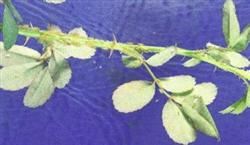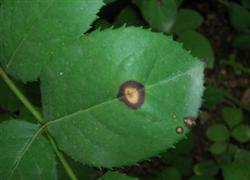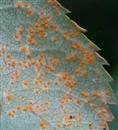Control methods of APHIS gossypii

APHIS gossypii belongs to Homoptera and Aphidae. Nymph aphids, adult aphids harm rose, rose, ten sisters, etc., due to the effective stagnation of the growth of young leaves and buds, it is not easy to stretch, and the ornamental value is often affected by feces adhering to the leaves. First, the morphological characteristics of wingless parthenogenetic aphids are large, ovoid and 4.2 mm long. Head khaki to light green, chest, abdomen grass green, sometimes orange-red. The frontal tumor of the head is protruding and protruding. The ventral tube is black, long cylindrical, with reticulated ends, and the rest are tile patterns, with a total length of 1.3 mm. The winged parthenogenetic aphid is 3.5 mm long, slightly greenish, yellow in the middle chest and 2.8 mm antennae. The other characteristics are similar to those of wingless parthenogenetic aphids. Second, the life history and habit of Chinese rose aphids occur 10-20 generations a year, and adult and nymph aphids overwinter in the axils of stem stubble in Jiangsu and Zhejiang provinces. After the spring rose germinated, the overwintering aphid propagated on the tender leaves of the new shoots and began to harm the tender shoots from the first ten days of April, and the flower buds and leaves could sometimes be covered with a layer. Winged aphids occurred one after another since the middle of April, and the damaged plant rate and insect population density increased significantly. The first breeding peak was in the middle of May, and the insect population density decreased in high temperature and continuous rainy weather from July to August. And the average temperature is about 20 ℃, when the relative humidity is 70-80% (that is, around May and October), the reproduction is the fastest, and the harm is the most common and serious. 3. Control methods 1. After autumn, all stems above 10-15 cm were cut off from late October to early November and burned. 2. When the population density is high, spray 50% phoxim or 50% fenitrothion 1000 times, 20% fenvalerate 2000-2500 times, or 50% aldicarb 3000 times.
- Prev

How to prevent and cure brown spot of rose
Brown spot mostly occurs in the hot and muggy rainy season. Purple-brown round spots appear on the front of the leaves, with slightly ciliated edges, and there are many small black spots in the center. These small black spots are the conidia of pathogens. After the small black spots split, the spores were released to spread the disease. It can also spread with Rain Water. Brown spot depends on scores.
- Next

Symptoms and control methods of rose rust
Rose rust occurs in countries with suitable climate all over the world. It sometimes causes serious harm to rose cultivated in greenhouse. In addition to rose, the disease can also infect roses, roses and other flowers. There are many kinds of pathogens of rose rust, including 10 species reported abroad and 3 species known in China. One of them is short point.
Related
- Fuxing push coffee new agricultural production and marketing class: lack of small-scale processing plants
- Jujube rice field leisure farm deep ploughing Yilan for five years to create a space for organic food and play
- Nongyu Farm-A trial of organic papaya for brave women with advanced technology
- Four points for attention in the prevention and control of diseases and insect pests of edible fungi
- How to add nutrient solution to Edible Fungi
- Is there any good way to control edible fungus mites?
- Open Inoculation Technology of Edible Fungi
- Is there any clever way to use fertilizer for edible fungus in winter?
- What agents are used to kill the pathogens of edible fungi in the mushroom shed?
- Rapid drying of Edible Fungi

